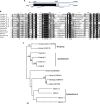Unfolding the secrets of coral-algal symbiosis
- PMID: 25343511
- PMCID: PMC4817714
- DOI: 10.1038/ismej.2014.182
Unfolding the secrets of coral-algal symbiosis
Abstract
Dinoflagellates from the genus Symbiodinium form a mutualistic symbiotic relationship with reef-building corals. Here we applied massively parallel Illumina sequencing to assess genetic similarity and diversity among four phylogenetically diverse dinoflagellate clades (A, B, C and D) that are commonly associated with corals. We obtained more than 30,000 predicted genes for each Symbiodinium clade, with a majority of the aligned transcripts corresponding to sequence data sets of symbiotic dinoflagellates and <2% of sequences having bacterial or other foreign origin. We report 1053 genes, orthologous among four Symbiodinium clades, that share a high level of sequence identity to known proteins from the SwissProt (SP) database. Approximately 80% of the transcripts aligning to the 1053 SP genes were unique to Symbiodinium species and did not align to other dinoflagellates and unrelated eukaryotic transcriptomes/genomes. Six pathways were common to all four Symbiodinium clades including the phosphatidylinositol signaling system and inositol phosphate metabolism pathways. The list of Symbiodinium transcripts common to all four clades included conserved genes such as heat shock proteins (Hsp70 and Hsp90), calmodulin, actin and tubulin, several ribosomal, photosynthetic and cytochrome genes and chloroplast-based heme-containing cytochrome P450, involved in the biosynthesis of xanthophylls. Antioxidant genes, which are important in stress responses, were also preserved, as were a number of calcium-dependent and calcium/calmodulin-dependent protein kinases that may play a role in the establishment of symbiosis. Our findings disclose new knowledge about the genetic uniqueness of symbiotic dinoflagellates and provide a list of homologous genes important for the foundation of coral-algal symbiosis.
Figures



References
-
- Altschul SF, Gish W, Miller W, Myers EW, Lipman DJ. (1990). Basic local alignment search tool. J Mol Biol 215: 403–410. - PubMed
-
- Arnér ESJ, Holmgren A. (2000). Physiological functions of thioredoxin and thioredoxin reductase. Eur J Biochem 267: 6102–6109. - PubMed
-
- Baker AC. (2003). Flexibility and specificity in coral-algal symbiosis: diversity, ecology, and biogeography of Symbiodinium. Annu Rev Ecol Evol Syst 34: 661–689.
Publication types
MeSH terms
Substances
LinkOut - more resources
Full Text Sources
Other Literature Sources

